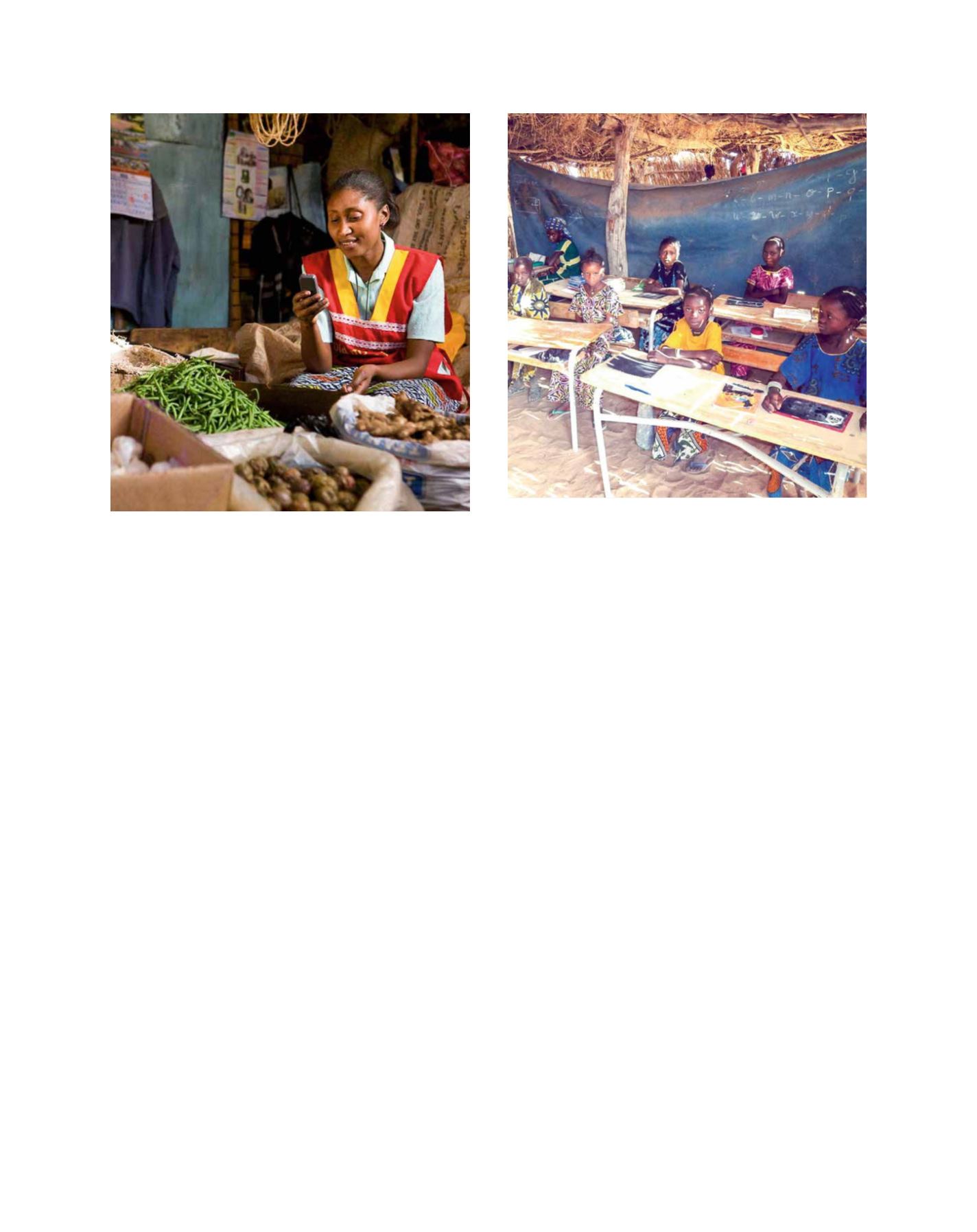

[
] 29
Women’s education is an extraordinary asset that remains
largely unused. If low income countries achieve the target of
universal secondary education by 2030, per capita incomes
will increase by 75 per cent. It is reported that in develop-
ing countries, women invest 90 per cent of their income
in the well-being, education and nutrition of their families
(compared to about 35 per cent for men).
Literate societies where women and men, girls and boys
benefit from decent education systems and lifelong learning
and development opportunities are more likely to be able to
reduce poverty, live healthier lives and acquire better employ-
ment prospects. According to the 2016 Global Education
Monitoring (GEM) Report,
1
educated mothers will save the
lives of their children – 3.5 million child deaths could be
prevented from 2040-2050 in sub-Saharan Africa alone by
achieving the 2030 education commitments.
The GEM Report notes that there are 758 million illiterate
adults in the world and two thirds of these are women like
Rokhaya. The sad part is that this proportion has remained
unchanged in the last 20 years. In Senegal, women accounted
for close to 2.5 million of the illiterate population in 2015,
according to the UNESCO Institute for Statistics – double
the proportion of men.
The GEM report finds that 15 million girls of primary-
school age will never get the chance to read or write in a
primary school setting. These girls are not expected to ever
set foot in a classroom. If this continues, the most disad-
vantaged girls in sub-Saharan Africa for instance, will only
make it to school in the year 2086. Education can provide
girls and women with the knowledge and skills they need
to fulfil their aspirations. Or in some cases, simply to free
themselves from a vicious cycle of continued dependence
or poverty.
In that context, mobile phones represent a unique
opportunity.
Mobile phones can reach the unreachable and they can
motivate them to learn new skills in their own time and
beyond the institutionalized school system. For instance, in
Senegal, mobile phone subscriptions skyrocketed in recent
years: according to the World Bank, they went from 1.1
million in 2004 to 14.4 million subscribers in 2014.
Since mobile phones include services that rely on literacy
skills such as text messages, e-mail and for some Internet
access, the device is considered a very useful pedagogical tool.
It provides learners with critical and cognitive skills they can
apply to real-life situations in their context.
Mobile phones open up new ways of communication and
networking within small communities. They could also
lead to new income-generating activities: after she gradu-
ated from UNESCO’s PAJEF programme, Rokhaya realized
that she could use her new skills to make some money for
herself and her family. She began renting her phone and her
newly-acquired writing skills to women who were in the same
situation with their husbands or kids in a different part of
Senegal. Through her phone she met new people, made new
friends and earned additional income.
But more needs to be done in that respect, as there is a clear
digital divide which negatively reinforces the gender divide.
Globally, 37 per cent of women are online (as opposed to 41
per cent of men). In the developing world the gender gap is
much larger. A report by Intel found that “on average across
the developing world, nearly 25 per cent fewer women than
men have access to the Internet, and the gender gap soars to
nearly 45 per cent in regions like sub-Saharan Africa.”
2
This digital divide in not inconsequential: a study in 12 Latin
American and 13 African countries
3
found that the gender
A woman using her mobile phone at the street market
Image: UNESCO/Nokia
Girls attending school in Northern Senegal; education is key to development
here, where about half of the population are illiterate
Image: Birama Touré
G
ender
E
quality
and
W
omen
’
s
E
mpowerment
















